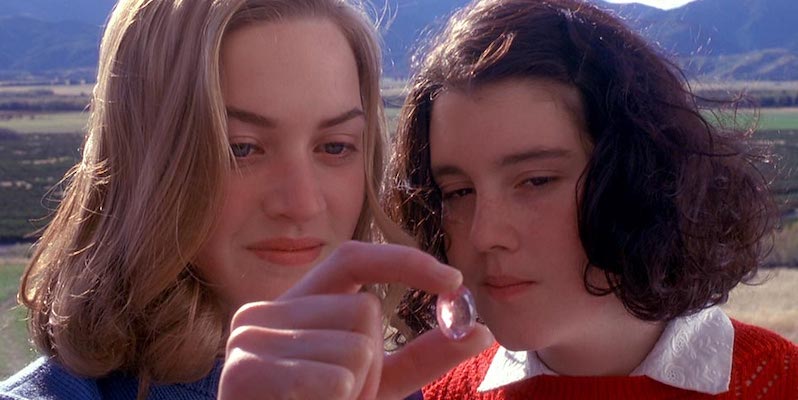We all know about toxic friendships, frenemies and friend-foes, where those that have your back are the most likely to knife you there instead. Countless thrillers have been inspired by the topic, not least by me – The Lies You Told is all about what happens when a supposed friendship is masking something a lot less amicable on the inside.
What I want to address now is something darker still: the friendships and relationships but for which terrible events might never occur, the meeting of two people but for which they might each have lived an entirely blameless life.
The damage moves along a spectrum. Take Jane Austen’s Emma as an example (not an obvious fit in a crime column, I know!). Emma is a managing, opinionated young woman but until she meets Harriet Smith, her meddling has no particularly ill ends. It’s only when she starts to matchmake Harriet that real damage starts to be done.
Or The Talented Mr Ripley by Patricia Highsmith. Tom Ripley is a low-level hustler with aspirations until he meets Dickie Greenleaf, the progression of which relationship leads almost inevitably to murder. Tara Isabella Burton takes this theme and elevates it further in Social Creatures in her exploration of female insecurity set among the socialites of Manhattan, when the struggling Louise meets Lavinia, the woman with everything, which meeting transforms both of their lives forever, and not for the good.
Each of these examples shows how a new friendship provides a catalyst to one of the participants behaving more badly than they might have done otherwise. But friendship can also be a catalyst to both people changing, becoming the worst versions of themselves.
Film provides great examples of this. Mean Girls, the 2004 classic teen girl movie starring Lindsay Lohan and Tina Fey is a brilliant example of a nice girl turned bad when she gets drawn into Regina George’s rule of terror. Even more so, Heathers, a personal favourite and in my opinion one of the greatest high school movies out there.
Veronica Sawyer is leading a blameless but frustrated life on the periphery of the Heathers, a toxic group of girls who lead the high school – everyone wants them as a friend or a fuck – until Jason Dean, played by the brilliantly charismatic Christian Slater, strides into view with his shot gun, giving Veronica’s teenage angst a body count. But for that relationship, it’s highly unlikely that anyone would have died.
Heavenly Creatures, released in 1994, is a much darker movie. This centres on a friendship between two teenage girls, Juliet and Paulina, and culminates in the murder of Paulina’s mother. The crux of this relationship is a folie à deux, in which both girls together whip themselves up into a frenzy of murderous rage. What’s particularly chilling about this film is it is about a true-life case, a murder which took place in 1952 in Christchurch, New Zealand.
This foreshadows an even more sinister scenario, the notorious stabbing of a 12 year old in Waukesha, Wisconsin by two other 12 year olds, classmates of the victims. The assailants had become convinced that the Slender Man hoax was real and that their families would be harmed if they did not commit this murder as a precursor to becoming the Slender Man’s proxy. Would they have acted in this way if they had not been working together, winding each other up in their delusions?
I’m not convinced that without Bonnie, there would have been a Clyde, or without Myra Hindley, Ian Brady’s murderous tendencies would have emerged in quite such a horrific way. The marriage between Fred and Rosemary West had truly monstrous results (Happy Like Murderers by Gordon Burn on their reign of horror is possibly one of the most terrifying and sickening true crime accounts that you might ever read). Two parts of a chemical reaction, inert on their own but which together create an explosion.
It’s rich pickings for fiction. Without bringing Henry, Frances, Charles and Camilla together in their Classics class in Donna Tartt’s The Secret History, Bunny would still be alive, not a victim of their insatiable desire to mimic the excesses of a Bacchanal and cover up the ill effects. Amb and Sully would be able to attend their ten-year college reunion in The Girls Are All So Nice Here by Laurie Elizabeth Flynn without fear of the revenge that awaits them for their terrible actions as students and toxic friends back in the day. Kit Owens would be fulfilling her scientific dreams in Give Me Your Hand by Megan Abbott if she weren’t haunted by her college friendship with Diane Fleming a decade before.
It’s been fertile territory for me, too. It Ends At Midnight opens with a scene in the present day in which two bodies are impaled on iron railings outside a house in Edinburgh, after a New Year’s party which has gone horribly wrong. But the seeds to this tragedy are sown over twenty-five years before when two girls called Sylvie and Tess meet each other at high school and become friends. At first the friendship is strong, supportive, but gradually they start to compete, and it’s in that competition that the darkness begins, a chain of events set in place that culminate in the bloody New Year’s Day so many years later.
***


















